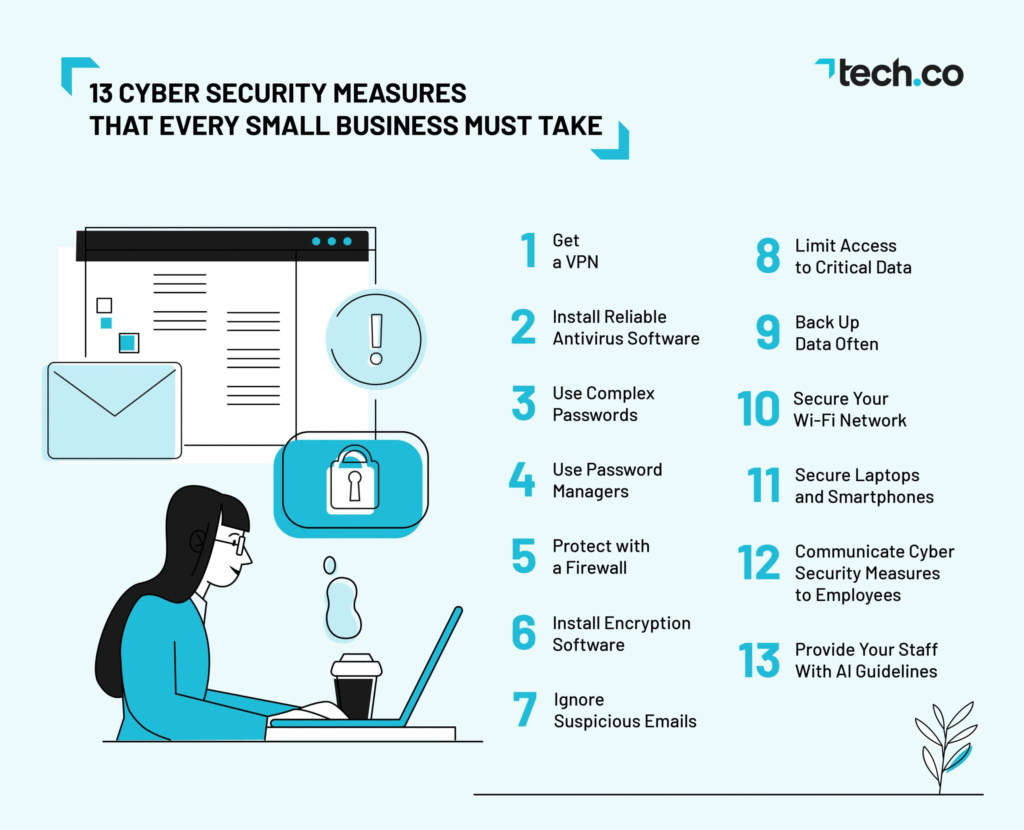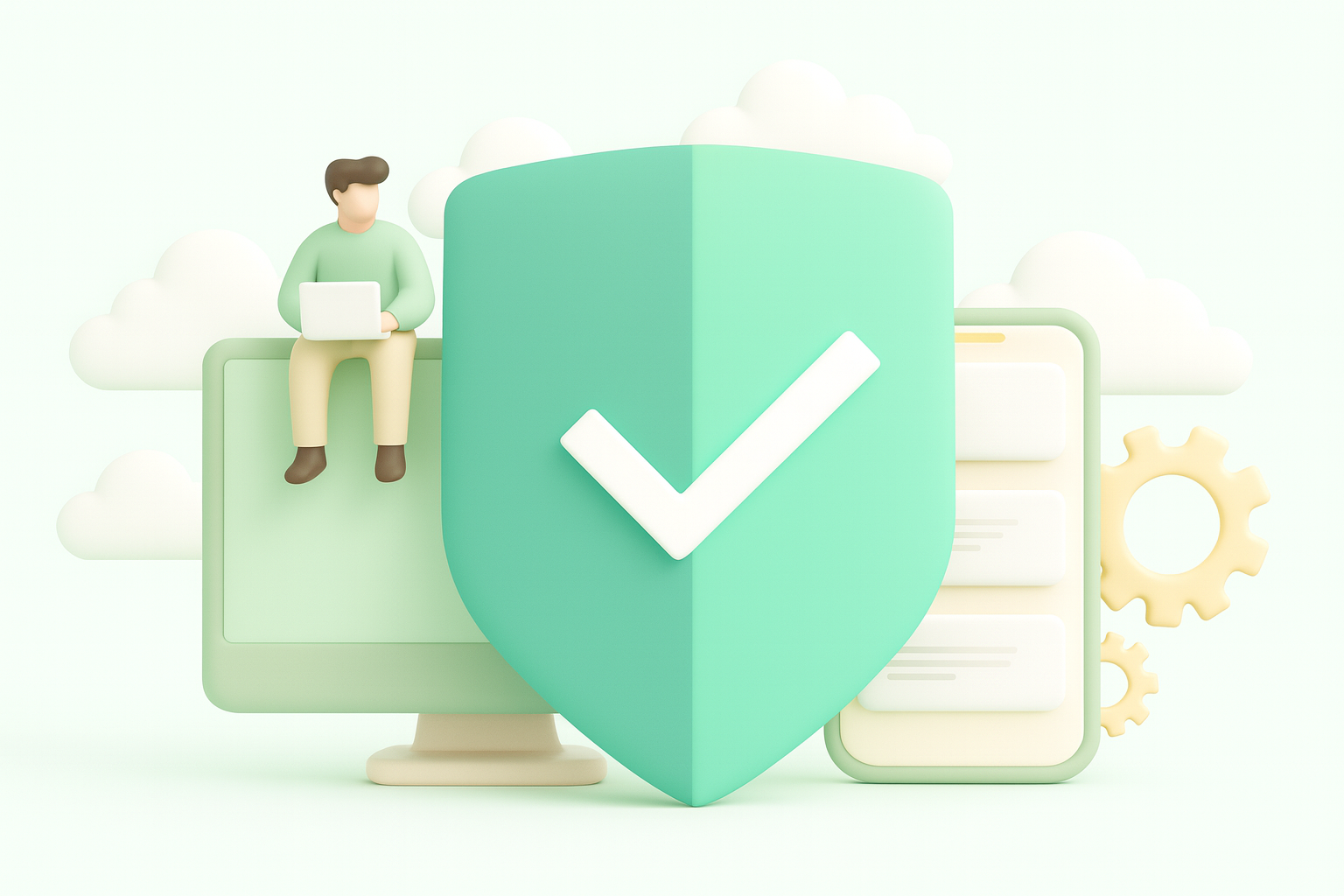For small businesses, a website is more than just an online presence. It is often the primary channel for attracting consumers, generating leads, and driving sales.
However, with limited budgets and resources, several small business owners assume that website security is only something large enterprises can afford.
However, sadly, due to these misconceptions, they can become susceptible to cyber attacks, malware, and data breaches, which harm their operations and erode customer trust.
As a matter of fact, the best measures of securing a site are not necessarily costly tools or IT teams.
Small businesses can protect themselves against the most common online threats by combining affordable, practical cybersecurity practices.
Below is a summary of successful strategies that can be implemented affordably.
Why Website Security Matters for Small Businesses in 2025
If you run a small business, your website is probably one of your most important tools.
It helps you reach customers, make sales, and build trust. But that also means it can be a target. Many small businesses think hackers only go after big companies, but that’s not true.
In fact, small businesses are often attacked because they seem easier to break into.
The good news is that most website threats — like weak passwords, outdated plugins, or unsafe connections — can be stopped with a few simple, low-cost steps.

You don’t need a big IT team or expensive software. Just by using secure hosting, buying an SSL certificate, keeping things updated, and backing up your data, you can protect your website, your customers, and your business reputation.
1. Start with a Reliable, Low-Price Hosting Provider
The secured website begins with the foundation of the low price hosting provider you choose. Many cost-effective hosting options cut corners on security, leaving websites exposed to attacks.
Consider web hosting providers that offer essential security features, such as buying SSL certificates, firewalls, DDoS protection, and automatic backup plans.
Even shared hosting providers today offer these at reasonable costs, making them a smart starting point for small businesses.
2. Buy an SSL Certificate and Enable HTTPS
An SSL certificate is one of the least expensive yet effective security solutions you can engage.
It encrypts data sent between your web pages and the visitor, and secures confidential information such as usernames and passwords or customer data.
HTTPS, in addition to security, enhances SEO as well as credibility. Customers are likely to trust a site that displays a padlock in their browser.
2. Regularly Update Your CMS, Plugins, and Themes
Cyberattackers often target vulnerabilities in outdated software, and small business websites running older WordPress versions, plugins, or themes are easy prey. Set up reminders or automatic updates to keep the website live.
Staying on top of updates ensures you are protected against security loopholes. It reduces the exploitation risk at no additional cost.
4. Strengthen Login Security with Passwords and 2FA
Weak or reused passwords are one major cause of hacked websites. For small business owners juggling multiple accounts, it is tempting to take shortcuts with credentials.
Using password managers allows you to create and save strong, unique passwords. You may use two-factor authentication (2FA) as a second layer of protection.
So if your password is stolen, it won’t be as easy for the attackers to access your website.
5. Limit Login Attempts and Add Captchas
One everyday risk to small business websites is a brute-force attack in which hackers use trial and error to crack username and password combinations.
With no control, the attackers would also engage in thousands of logins within several minutes.
A plugin that prevents multiple login attempts and introduces captchas is cheap but an effective protection layer, eliminating auto login attacks.
These steps avoid auto login breaches and provide dashboard access to genuine users.
5. Backup Your Website Regularly
No website is completely safe, even with security protocols implemented. Backups enable you to recover your website quickly if it has been compromised.
With affordable backup plugins and hosting attributes, this process is a cinch! If possible, maintain multiple versions of backups in separate locations, such as cloud storage or offline drives. Redundancy will also save you from experiencing major problems in the event of an emergency.
7. Use a Basic Security Plugin for Continuous Protection
A best-in-class enterprise-level security platform may look costly, but small businesses don’t need it to stay secure.
Secured, free, and low-cost WordPress security plugins offer essential features like malware scans, firewalls, and suspicious activity alerts.
Wordfence or iThemes Security offer solid protection at little to no cost, giving you peace of mind without adding to your budget.
8. Monitor Your Website for Suspicious Activity
Even with strong defenses in place, ongoing monitoring is key to catching threats early.
Fortunately, small businesses can track suspicious behavior affordably, or even for free.
How to do it:
- Enable security alerts in your hosting dashboard or through your WordPress security plugin (e.g., Wordfence, iThemes).
- Set up Google Search Console, which automatically notifies you of malware, indexing issues, or compromised pages.
- Use free uptime monitoring tools like UptimeRobot or StatusCake to get notified if your site suddenly goes offline, often an early sign of an attack.
Regularly reviewing these alerts helps you respond quickly before a small problem becomes a costly disruption.
9. Educate Your Team and Build Cyber Awareness
The most advanced tools won’t help if your team falls for a phishing email or uses weak passwords.
Building a culture of security awareness costs nothing but can prevent most breaches.
Simple, low-cost actions:
- Encourage everyone with site access to use strong passwords and enable 2FA.
- Share free cybersecurity resources from trusted sources like Google Digital Garage or the U.S. Small Business Administration.
- Conduct quick monthly reviews (10–15 minutes) to remind staff how to spot suspicious emails or avoid risky downloads.
Small business security starts with people. A few minutes of training each month can save thousands in potential losses.
✅ Website Security Checklist for Small Businesses
Use this simple checklist to ensure your website is protected with affordable but effective security measures:
🧱 Foundation
☐ Choose a reliable, low-price hosting provider that includes SSL, firewalls, and backups.
☐ Avoid hosts that lack clear security features or support.
🔒 Encryption
☐ Buy an SSL certificate and enable HTTPS across your entire site.
☐ Check your site regularly for the browser padlock icon.
⚙️ Maintenance
☐ Keep your CMS, plugins, and themes updated automatically or on schedule.
☐ Remove unused plugins or themes to reduce vulnerabilities.
🔐 Access Security
☐ Use strong, unique passwords for all logins.
☐ Enable two-factor authentication (2FA) wherever possible.
☐ Limit login attempts and add Captchas to block bots.
💾 Recovery Readiness
☐ Backup your website regularly, store copies in multiple locations.
☐ Test your backups occasionally to ensure they restore correctly.
🧰 Protection Tools
☐ Install a basic security plugin (Wordfence, iThemes Security, or equivalent).
☐ Enable malware scanning and firewall settings.
👀 Monitoring
☐ Set up Google Search Console alerts for malware or site errors.
☐ Use uptime monitors like UptimeRobot to track outages.
👩💼 Team Awareness
☐ Train staff on phishing prevention and password safety.
☐ Share free online cybersecurity resources or monthly reminders.
💡 Pro Tip:
Print this checklist and review it monthly.
Website security isn’t a one-time task. It’s a habit that keeps your business protected and trusted.
Conclusion: Security Doesn’t Have to Be Expensive
Small business web security is not difficult or costly. Low-cost products such as SSL certificates, security plugins, and robust web hosting, as well as measures such as frequent updates and backups.
Modest, steady efforts are effective towards protecting your business and your consumers.
As business owners of small entities, taking these steps to minimize risks will enable them to focus on business development and reduce their fear of threats.
Security is not an additional feature; it is an essential part. Certainly, it can be achieved with any budget, at least when one has a proper mindset.








